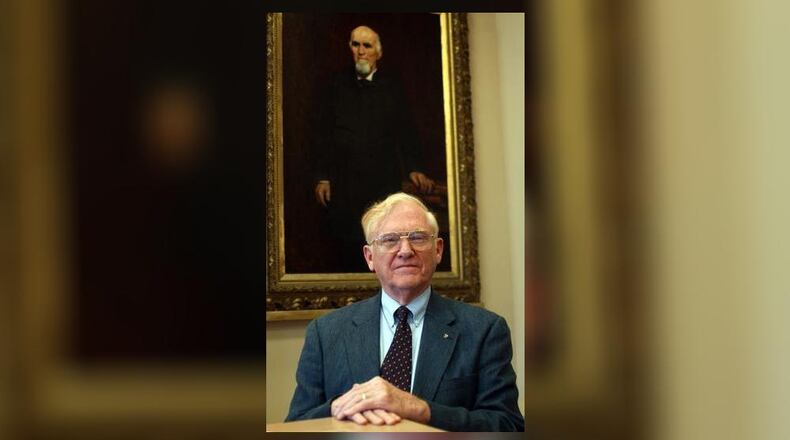My take is that it is far more normal than paranormal for a person who grew up half a dozen blocks from the college he graduated from in 1954 and at which he spent nearly 35 years of his professional life to revisit the place he knows so well at age 86.
MORE FROM TOM STAFFORD
Local artist may have hit breakthrough after years of work
Those who find ghost stories truly plausible will not be thrilled with Kinnison, who even before the title page denies any truly supernatural explanations of the campus-based ghost stories he told students at Halloween.
Whether telling the tale of the sprightly Flying Dutchman or the story of spirits of two freshmen who succumbed to typhoid fever “I assured the students these were only stories.”
Strangely, one of the book’s greatest strengths is in how the author successfully anchors the stories in the real world by explaining their historical context.
Challenges to religion from science in 19th century America, he explains, created “a climate of doubt” in which ghost stories would thrive for the same reason that a strong Spiritualist movement did.
Contributing to the more ominous ghostly tones were lingering effects of a Civil War whose casualty levels were “traumatic for virtually every family, North and South.” Spurred on by that war, he adds, were developments of embalming fluids and tools of the mortician’s trade that both revolutionized funeral practices and gave birth to industries that “became a major part of Springfield’s postwar growth.” The Champion Chemical Company and the Metallic Casket Company come to mind.
Despite his down-to-earth explanations, Kinnison shows a flare for being able to drape ghost stories on the historical figures of Wittenberg’s past like one might hang a white sheet on a trick-or-treater.
An instance is the story of David Burger, 1838-56, and how the presence of typhoid on campus might explain his being buried in a grave he dug for someone else. Burger’s story also allows Kinnison to capture the spirit of the college’s early literary societies, Excelsior and the Philosophian, which he tells us had links to Edgar Allen Poe and Henry Wordsworth Longellow.
Perhaps overburdened by his conscience, Kinnison unceremoniously debunks what he rightly calls “the fundamental ghost at Wittenberg.” As many know, that ghost is a union officer said to be haunting the cupola and upper floors of Myers Hall and restless for the companionship of the horse he rode in on.
Kinnison said the tale’s proper owner is the Lutheran Seminary at Gettysburg, where the great Civil War battle took place.
Kinston’s solution is to propose that spooky experiences of students living in candle-lit rooms of the hall are instead the results of hauntings by Indian Fight “Mad Anthony” Wayne or ancient warriors whose numerous burial mounds in the area were disturbed when settlers arrived.
To his credit it seems as probable that these spirits are the source of the sounds of horses loosed in dorm or stones sent rolling down hallways in the middle of the night.
Kinnison also casts real-life figures including an old-time groundskeeper and a grumpy college steward in his haunted tales.
Not surprisingly, Woodshade Cemetery, which once occupied the corner of campus now occupied by the science building, proves fertile ground for spooky stories. Kinnison suggests that the Plum Street Ghost began its hauntings in 1863 when the spirit temporarily left its assigned grave in Woodshade and could not find the casket’s whereabouts after it was moved to Ferncliff Cemetery.
Haunted trunks, chairs and ghosts of the living who once walked the grounds at Wittenberg also make appearances. So, in an interesting way, do lines published in Aug. 31, 1868, edition of the Springfield Republic that muse on how disorienting change can be on we poor mortals.
“How mysterious are the dealings of Providence with his creatures,” the story says. “The generations of man follow each other like waves upon the ocean, and the progressive spirit of man, like the rolling billows, either sinks or rises as these generations succeed each other. The lapse of a hundred years works a mighty change in the manners and conditions of the inhabitants of earth.”
It would seem no mystery that people in a time like ours, in which change seems to be accelerating, might be haunted by the seeming strangeness of the world we may someday soon find ourselves in.
In that context, the words of inscription for America’s Most Haunted Campus might provide guidance.
“It is not the ghost that arouses fear in you,” Kinnison writes, “it is the fear in you that arouses the ghost.”
About the Author
